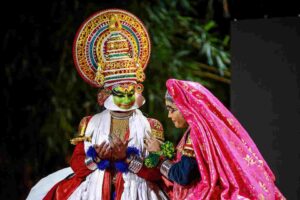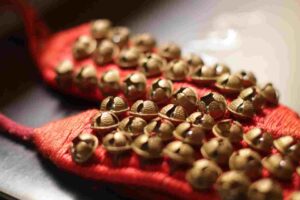India, a land of rich cultural heritage, is known for its vibrant and diverse dance forms. Indian dances have captivated audiences worldwide with intricate footwork, expressive gestures, and mesmerizing music. Each dance form tells a unique story and reflects the traditions and customs of its region. In this article, we will journey from classical to contemporary Indian dances, exploring their history, significance, and influence.
History and Origins of Indian Dances
Indian dances have a long and fascinating history that dates back thousands of years. The origins of these dances can be traced to ancient times when they were an integral part of religious rituals and social ceremonies. The Natya Shastra, a Sanskrit text by sage Bharata Muni, is the foundation of Indian classical dance. It provides detailed instructions on various aspects of dance, including gestures, postures, and expressions.
Classical Indian Dances
Classical Indian dances are the epitome of grace, precision, and storytelling. They are deeply rooted in mythology and are characterized by their elaborate costumes, intricate footwork, and expressive facial expressions. Let’s delve into some of the most prominent classical Indian dance forms:
Bharatanatyam

Bharatanatyam, originating from the southern state of Tamil Nadu, is one of India’s oldest and most popular classical dance forms. It is known for its complex rhythmic patterns, graceful movements, and intricate hand gestures called mudras. Bharatanatyam dancers often perform solo and portray mythological stories through expressive dance movements.
Kathak
Kathak, hailing from the northern states of India, is a dance form that combines elements of storytelling, music, and rhythmic footwork. It evolved in the Mughal courts and has both Hindu and Muslim influences. Kathak dancers are known for their fast spins, rhythmic footwork, and complex facial expressions. The dance form narrates stories from ancient epics and celebrates love, devotion, and spirituality.
Odissi
Originating from the eastern state of Odisha, Odissi is a graceful and lyrical dance form that dates back to the 2nd century BC. Its fluid movements, sculpturesque poses, and expressive facial expressions characterize it. Odissi dancers often portray stories from Hindu mythology, focusing on the divine love between Radha and Krishna.
Kathakali
Kathakali, a dance-drama form from the southern state of Kerala, is known for its vibrant costumes, elaborate makeup, and exaggerated facial expressions. It combines dance, music, and acting elements to depict stories from Hindu epics. Kathakali dancers train rigorously for years to master the intricate hand gestures, eye movements, and powerful footwork required for this unique art form.
Folk Indian Dances
Alongside classical dances, India is also home to many vibrant folk dance forms. These dances are deeply rooted in the traditions and customs of various regions, reflecting the diversity and cultural richness of the country. Let’s explore some of the most popular folk Indian dances:
Bhangra
Originating from Punjab, Bhangra is a lively and energetic dance form that celebrates the harvest season. Vigorous movements, rhythmic clapping, and the iconic Bhangra drum, the dhol characterize it. Bhangra has gained immense popularity worldwide and is often performed at weddings, festivals, and cultural events.
Garba
Garba, originating from the western state of Gujarat, is a joyful and colourful dance form performed during the Navratri festival. It involves circular movements, graceful hand gestures, and rhythmic clapping. Garba is usually performed in a group, with dancers dressed in traditional attire, swaying and twirling to the beats of Gujarati folk music.
Dandiya

Dandiya, also originating from Gujarat, is a dance form performed with colourful wooden sticks called dandiyas. It is usually performed in pairs, with dancers matching their footwork and movements to the energetic beats of traditional Gujarati music. Dandiya is often performed during the Navratri festival and symbolizes joy and celebration.
Ghoomar
Ghoomar, originating from Rajasthan, is a graceful and mesmerizing dance form women perform. It involves swirling movements, graceful hand gestures, and twirling in circles while wearing colourful traditional attire. Ghoomar is often performed during festivals and special occasions in Rajasthan and is known for its elegance and beauty.
Contemporary Indian Dances

While classical and folk dances are essential in Indian culture, contemporary Indian dances have emerged as a fusion of traditional and modern elements. These dance forms incorporate elements from various styles, including classical, folk, and Western dance. Let’s explore some of the most popular contemporary Indian dance forms:
Bollywood Dance
Bollywood dance, inspired by the colourful and energetic dance sequences in Indian cinema, is a fusion of various dance styles, including classical, folk, and Western. It is known for its high energy, expressive movements, and catchy music. Bollywood dance has gained immense popularity worldwide and is often performed at weddings, parties, and cultural events.
Fusion Dance
Fusion dance combines elements from different dance styles to create a unique and innovative form of expression. It blends classical, folk, contemporary, and international dance styles to create visually stunning and thought-provoking performances. Fusion dance allows dancers to explore their creativity and push the boundaries of traditional dance forms.
Contemporary Classical Dance
Contemporary classical dance is a modern interpretation of traditional Indian classical dance forms. It combines classical dance’s grace and precision with contemporary dance’s freedom and creativity. Contemporary classical dancers experiment with movements, music, and themes to create unique and captivating performances that resonate with a modern audience.
Popular Indian Dance Festivals
India is known for its vibrant and lively dance festivals, which showcase the rich diversity of Indian dance forms. These festivals bring together dancers, choreographers, and enthusiasts from all over the country to celebrate the art of dance. Some of the most popular Indian dance festivals include:
- Nrityotsav: An annual dance festival in Delhi showcasing various classical and contemporary dance forms.
- Khajuraho Dance Festival: A week-long festival held in the temple town of Khajuraho, featuring performances by renowned classical dancers from all over India.
- Chennai Dance and Music Festival: A month-long festival held in Chennai showcasing classical music and dance performances by both established and upcoming artists.
- Udaipur World Music and Dance Festival: A cultural extravaganza held in Udaipur, Rajasthan, featuring performances by artists worldwide.
The Significance of Costumes and Accessories in Indian Dances

Costumes and accessories are crucial in Indian dances, adding beauty, colour, and symbolism to the performances. In classical dances, the costumes are often elaborate and intricately designed, reflecting the portrayed character. Accessories like jewellery, anklets, and headpieces enhance the overall look and add a touch of authenticity to the performances. In folk dances, the costumes are more vibrant and reflect the culture and traditions of the region. For example, in Bhangra, dancers wear colourful turbans and traditional Punjabi attire, while in Kathakali, elaborate makeup and headgear are an integral part of the performance.
Impact of Indian Dances on Western and Bollywood Dance

Indian dances have had a significant influence on Western and Bollywood dance styles. The intricate footwork, graceful movements, and expressive storytelling of Indian dances have been incorporated into various Western dance forms, adding a touch of Indian flair to the performances. Similarly, Bollywood dance, with its energetic and vibrant style, has influenced the dance routines in Western music videos and stage performances. The fusion of Indian and Western dance styles has created a unique and captivating expression that transcends cultural boundaries.
Choreographers and Performers
India has produced numerous talented dance choreographers and performers who have significantly contributed to the dance world. Some of the most renowned names include:
- Birju Maharaj: A Kathak maestro and one of the most celebrated Indian classical dancers.
- Alarmel Valli: An acclaimed Bharatanatyam dancer is known for grace and passionate performances.
- Shiamak Davar: A pioneer of contemporary Indian dance and the founder of the Shiamak Davar International dance academy.
- Madhuri Dixit: An iconic Bollywood actress known for her impeccable dance skills and expressive performances.
These artists have not only popularized Indian dances but also inspired generations of dancers to pursue their passion and excel in the art form.
Conclusion

Indian dances are a cultural, traditional, and artistic expression treasure trove. From classical to contemporary, each dance form has its unique charm and significance. The intricate footwork, expressive gestures, and mesmerizing music create performances that captivate and enchant audiences worldwide. Whether it’s the grace of Bharatanatyam, the storytelling of Kathak, or the energy of Bollywood dance, Indian dances continue to evolve and inspire, leaving a lasting impact on the dance world. So, step into the world of Indian dances and immerse yourself in the rhythm and grace that defines this beautiful art form.
